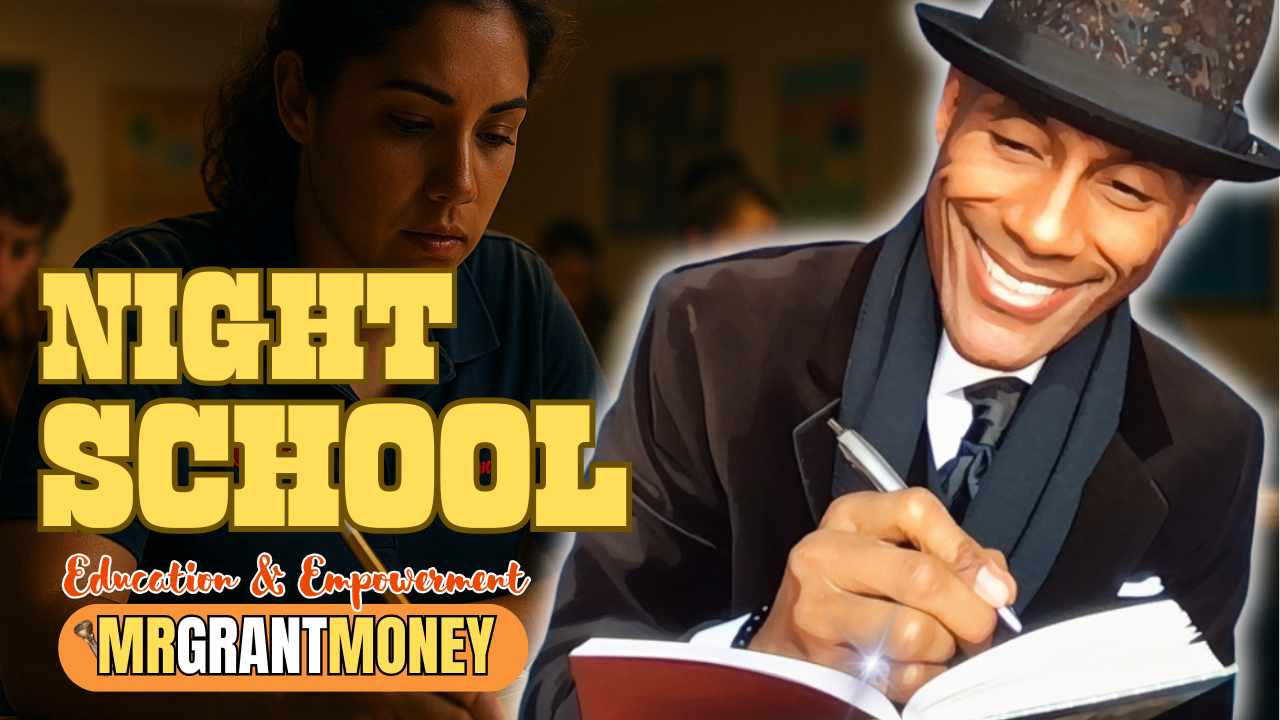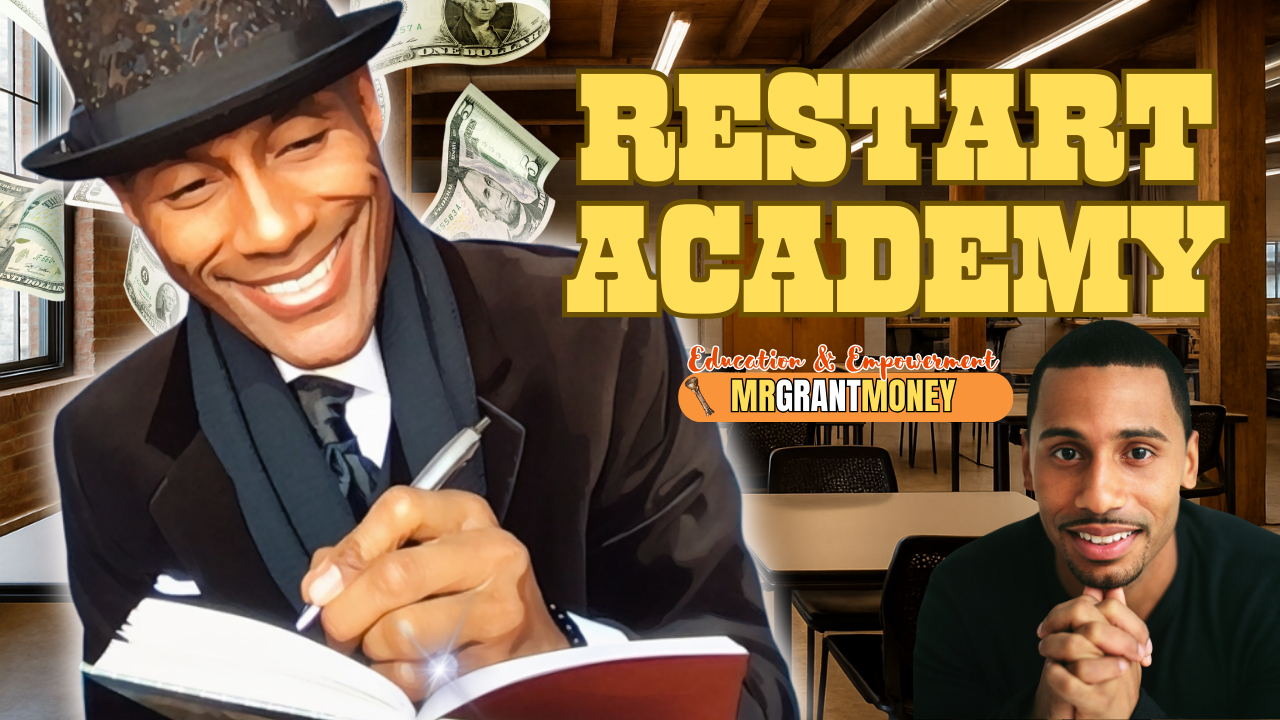The Climate Classroom: Mr. Grant Money & The Environmental Educator

When Teaching Science Means Stepping Outside—and Someone Shows Up with a Grant to Make It Last
When the Lesson Plan Starts with a Flood
Rule #1: Never take students into the field without a permission slip.
Ms. Reyes broke that rule the first week of school.
Because when your school sits just blocks from a neighborhood that floods every time it rains, and your students keep asking why the storm drains overflow, the right move isn’t filling out forms—it’s grabbing your boots.
She handed out notebooks, not worksheets. Had her students wade through puddles to take photos, sketch drainage paths, and measure water depth with rulers taped to yardsticks. They came back soaked, muddy—and full of questions.
“So,” she asked, “who’s ready to build a solution?”
That’s how The Climate Classroom began.
Not as a curriculum.
As a reaction.
An instinct.
A radical decision to teach science not in theory, but through lived reality.
When Real Learning Doesn’t Fit the System
From there, it moved fast.
Her students started running pH tests on standing water. Prototyping water filtration models. Designing green infrastructure proposals using cardboard, CAD software, and whatever supplies they could find.
Word spread. Parents got involved. A civil engineer from a local firm started volunteering. An architect dropped off reclaimed materials for student projects.
But with momentum came resistance:
-
“You’re outside your teaching mandate.”
-
“You can’t use instructional time for this.”
-
“There’s no budget. No framework. No precedent.”
Exactly, Ms. Reyes thought.
The district had no model for place-based, youth-led climate education. No funding channel. No policy support. She was funding supplies with her own paycheck. Printing handouts at home. Running experiments with donated PVC pipe and reused jars from the cafeteria.
The Call That Changed Everything
That’s when a friend at a local green nonprofit connected her to someone known for funding the bold—and the nearly impossible.
“He’s not just a grant guy,” they said. “He’s the guy. If he believes in you, he moves mountains.”
Three days later, he walked into the school’s front hallway—light gray suit, leather briefcase, polished shoes cutting through puddles on the linoleum.
“You’re Ms. Reyes?” he asked, extending a hand. “Heard you’ve got a classroom that leaks into the future.”
She raised an eyebrow. “We’re teaching with puddles and PVC pipe. It’s not exactly grant-ready.”
“Oh, it’s exactly grant-ready,” he said, flipping open his portfolio. “You’re doing youth-led design, place-based climate learning, community science. That’s fundable gold. You just haven’t been shown where to knock.”
Behind the Scenes: What Made the Climate Classroom Fundable
Over the next two weeks, Mr. Grant Money helped Ms. Reyes transform her passion project into a fully fundable initiative.
He helped her frame her work not just as environmental education—but as climate resilience infrastructure. He pulled language from federal priorities and state resilience strategies, lining up her impact with emerging grant trends.
💡 Insider Knowledge: Funders love cross-sector alignment. By linking her project to STEM outcomes, workforce readiness, climate equity, and community engagement, they made the proposal irresistible.
They applied to three overlapping grants:
-
A national environmental education innovation fund
-
A state climate resilience pilot program
-
A federal K–12 climate literacy initiative that encouraged partnerships between schools and local sustainability orgs
Together, the stack totaled over $400,000.
And they didn’t stop there.
Mr. Grant Money introduced a university education department to help validate the curriculum and a green architecture firm to co-design student-led infrastructure projects—turning her classroom into a replicable district model.
From Afterthought to District-Wide Pilot
The grant landed. Big.
The Climate Classroom wasn’t just legitimized—it became a district pilot program.
Ms. Reyes’s students:
-
Installed stormwater gardens around the school grounds
-
Mapped flood-prone areas using sensors and GIS software
-
Led walking tours for visiting city planners
-
Presented their findings at a regional sustainability conference
Students who used to skip science class were now building their own labs. And the community started showing up not just to support—but to learn from them.
This Wasn’t Charity. It Was Strategy.
Mr. Grant Money didn’t show up to save anyone.
He showed up to amplify what Ms. Reyes had already built—on grit, intuition, and urgency.
He didn’t overwrite her vision. He translated it into funder logic.
He didn’t pitch savior narratives. He handed her the microphone.
Because when the system says, “There’s no budget for this,”
what it usually means is, “We don’t know how to fund things we didn’t expect.”
Mr. Grant Money knows how.
The Future Is Soaked, Rooted—and Funded
Today, the Climate Classroom model is being replicated across the district, with interest from cities in the Gulf South looking to integrate it into their own adaptation efforts.
And Ms. Reyes?
She’s still breaking rules.
Still teaching with puddles.
Still making science real.
All because one man in a stormlight-sharp suit knew where the money lived—
And exactly how to move it toward the people building the future.
Discussion & Personal Reflection Questions
-
Why did Ms. Reyes’s approach to climate education face resistance, even though it clearly engaged students and the community?
-
What made her classroom “grant-ready” in Mr. Grant Money's eyes, even though it didn’t follow traditional rules or formats?
-
How did partnerships—with a university and an architecture firm—help strengthen her grant proposal and scale the program?
-
What does this story show about the role of teachers as innovators—and what kinds of support do they need to bring bold ideas to life?
-
Why is place-based, hands-on climate education so powerful—and how can funding systems better recognize and invest in it?
More Resources & Related Topics:
📌 Explore more success stories 📌 Learn about grant acquisition 📌 Discover financial literacy resources 📌 Check out youth entrepreneurship 📌 Browse scholarship opportunities
🔓 UNLOCK EXCLUSIVE TIPS WITH MR. GRANT MONEY!
We hate SPAM. We will never sell your information, for any reason.

















